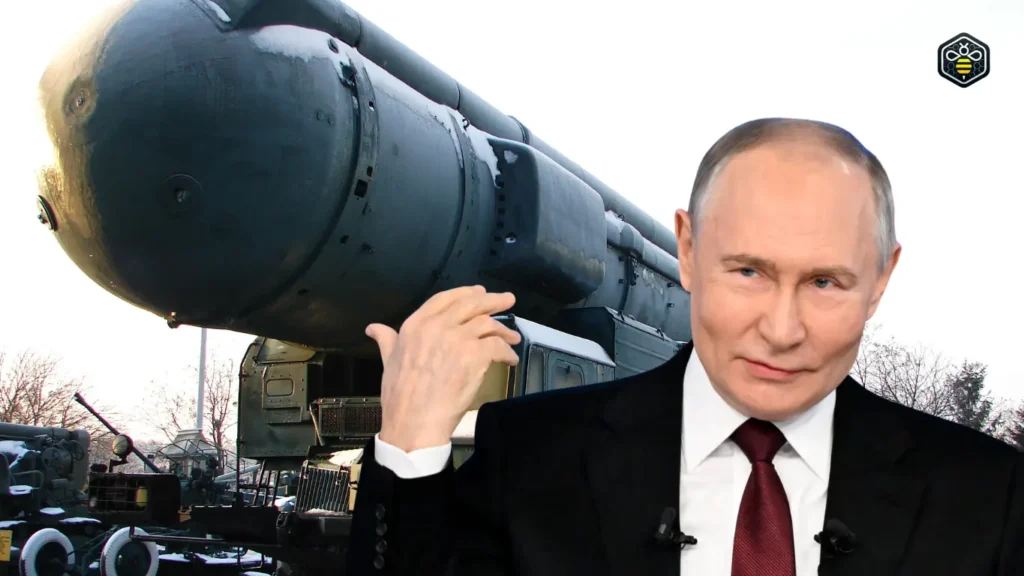
Russia’s latest military addition, the Oreshnik missile, has been making headlines as a potential game-changer in modern warfare. Officially unveiled in late 2024 and first deployed in combat on November 21, 2024, the missile has stirred debates worldwide. Is it truly an unstoppable hypersonic weapon, or is it just another piece of Russian military propaganda? In this article, we break down the facts, capabilities, and geopolitical implications of the Oreshnik missile.
What Is the Oreshnik Missile?
The Oreshnik missile, named after the Russian word for “hazel tree,” is an intermediate-range ballistic missile (IRBM). This means it has a range between 1,000 and 5,500 kilometers (620 to 3,400 miles), allowing it to strike deep into enemy territory.
Key Features and Capabilities
Speed: Reports claim it can reach speeds exceeding Mach 10 (12,300 km/h or 7,600 mph), making interception difficult.
Multiple Warheads: It allegedly carries multiple independently targetable reentry vehicles (MIRVs), meaning it can deliver multiple warheads to different targets in a single launch.
Heat Resistance: Russian President Vladimir Putin has claimed the Oreshnik warheads can withstand temperatures comparable to the surface of the sun (5,500°C / 9,932°F).
Launch System: The missile follows a ballistic trajectory, similar to traditional ICBMs (Intercontinental Ballistic Missiles) but with a shorter range.
Dual-Capable: Russia asserts the missile can carry both conventional and nuclear warheads.
How Does the Oreshnik Missile Work?
Like all ballistic missiles, the Oreshnik follows a three-stage process:
Launch Phase – Fired from land-based platforms, the missile propels itself into the upper atmosphere.
Midcourse Phase – In low-space orbit, it adjusts its trajectory and releases its MIRV warheads.
Reentry & Impact Phase – Warheads descend at hypersonic speeds, making interception difficult.
The first known combat use of the Oreshnik was against Ukraine’s Pivdenmash defense plant in Dnipro, with reports suggesting dummy warheads were used as a show of force rather than a destructive strike.
How Does It Compare to Other Missiles?
To determine whether the Oreshnik is revolutionary or overhyped, let’s compare it to existing missile technology:
| Missile Type | Country | Speed | Range | Warheads |
|---|---|---|---|---|
| Oreshnik | Russia | Mach 10+ | 1,000 – 5,500 km | MIRV (6 warheads) |
| RS-26 Rubezh | Russia | Mach 10+ | 6,000 km | MIRV |
| DF-26 | China | Mach 8-10 | 4,000 km | Single |
| Minuteman III | USA | Mach 23 | 13,000 km | MIRV (3 warheads) |
| Hypersonic Glide Vehicles (Avangard) | Russia | Mach 20+ | 6,000+ km | Single |
While impressive, the Oreshnik does not introduce groundbreaking technology compared to existing ICBMs and hypersonic weapons like the Avangard.
The Hype vs. Reality
Hype: “It’s Unstoppable”
Putin has boasted that the Oreshnik is “impossible to intercept.” However, most IRBMs travel at hypersonic speeds, making this claim not unique. The U.S. SM-3 Block IIA and Israel’s Arrow-3 missile defense systems are designed to counter high-speed threats, reducing the Oreshnik’s effectiveness. (Source: Missile Defense Advocacy Alliance)
Hype: “It Can Survive the Heat of the Sun”
The claim that Oreshnik’s warheads can resist extreme temperatures sounds dramatic. However, all reentry vehicles endure thousands of degrees in heat, making this a standard feature rather than an innovation.
Hype: “It Will Change the War in Ukraine”
The missile’s first combat use did minimal damage, suggesting it was a psychological weapon rather than a battlefield game-changer. (Source: Arms Control Association)
Why Is Russia Pushing This Narrative?
Intimidation Tactics: Russia aims to pressure NATO and Ukraine by showcasing a weapon that appears “unstoppable.”
Geopolitical Messaging: With tensions rising, demonstrating advanced missile capability is a way for Russia to signal strength to the West.
Internal Propaganda: Boosting national pride and justifying military spending to the Russian public.
The Oreshnik Missile’s Impact on Global Security
With Russia withdrawing from arms treaties like the INF Treaty, the development of the Oreshnik signals a return to Cold War-style missile competition. NATO countries, particularly those in Eastern Europe, are now assessing their missile defense systems to counter this new threat.
Potential Consequences
Increased Arms Race: The U.S. and its allies may accelerate their hypersonic missile programs in response.
Stronger NATO Defenses: Countries like Poland and Germany may seek advanced anti-ballistic systems to counteract Russia’s IRBMs.
Cyber & Electronic Warfare: Nations could explore non-kinetic countermeasures, such as cyber attacks to disrupt missile systems.
The Verdict: Game-Changer or Overhyped?
While the Oreshnik missile is undoubtedly a formidable weapon, it is not a game-changer in modern warfare. Its capabilities, while impressive, do not significantly outmatch existing missile technology from the U.S., China, or Israel. Instead, it serves more as a psychological tool in Russia’s geopolitical strategy rather than a decisive battlefield advantage.
Final Thoughts
If used conventionally, the Oreshnik is an expensive way to deliver limited destruction.
If deployed with nuclear warheads, it could escalate global tensions drastically.
For now, its greatest impact lies in political and military posturing, rather than actual warfare effectiveness.
What do you think? Is the Oreshnik missile a legitimate superweapon, or is it just another case of Russian military propaganda? Let us know your thoughts in the comments!

